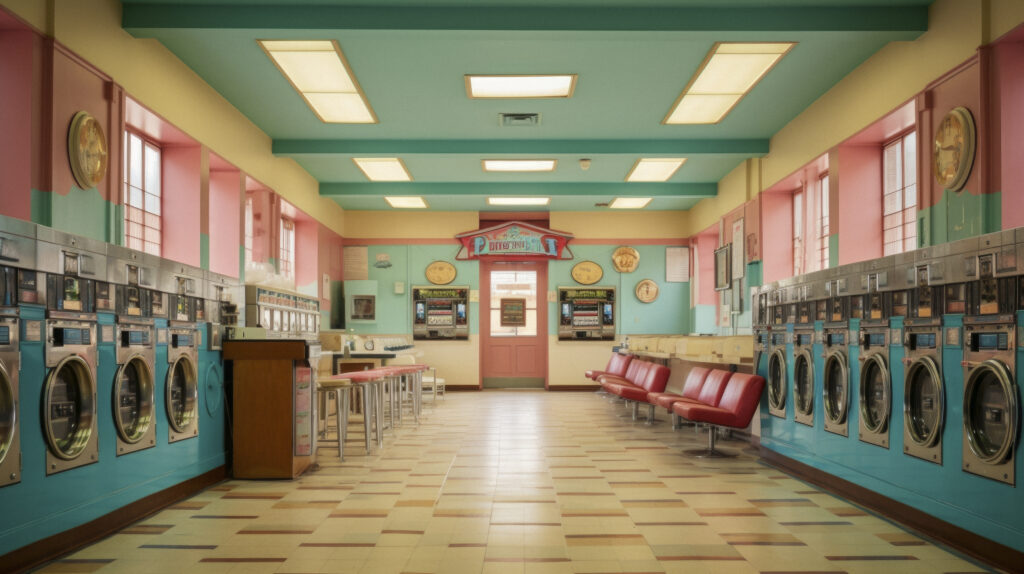Business Planning & Strategy, Financial Models
Laundry Shop Business: Costs, Revenue Potential and Profitability
A laundry shop operates in a repeat-service, location-driven segment where profitability depends on machine throughput, load pricing discipline, and utility cost control. While CapEx is relatively high due to equipment investment, the model scales efficiently through self-service, drop-off, and value-added offerings like ironing or delivery. Profit is driven by machine utilization per hour, not customer volume alone.
Asset Configuration
CapEx is front-loaded, concentrated in commercial washers, dryers, plumbing, and fit-out. A typical store ranges from 800 to 1,500 sq. ft., housing 6 to 16 machines and optional folding, ironing, or waiting areas.
| Asset Category | Cost Range (USD) | Notes |
|---|---|---|
| Commercial Washers (4–8 units) | 25,000 to 45,000 | Front-loaders, 20–40 lb capacity, programmable cycles |
| Commercial Dryers (4–8 units) | 20,000 to 35,000 | Gas or electric, moisture sensors |
| Water Heating, Plumbing, Drainage | 10,000 to 20,000 | Required for heat systems, compliance |
| POS, Payment Kiosks, Card Systems | 5,000 to 10,000 | Cashless systems, machine timers, receipt printing |
| Fit-Out (tile, folding, signage, lighting) | 10,000 to 20,000 | Seating, signage, security, counters |
| Initial Supplies and Chemical Inventory | 3,000 to 5,000 | Detergents, bags, cleaning agents |
Total CapEx: 73,000 to 135,000 USD, depending on machine count, capacity, and level of self-service automation.
Revenue Model
Revenue is service-based, with core income from self-service machine use and attended drop-off laundry. Secondary revenue streams include ironing, detergent sales, monthly subscriptions, and pickup/delivery services.
Annual Revenue Potential for a 1,000 sq. ft. Laundry Shop with 8 Washers, 8 Dryers
| Revenue Stream | Volume Assumption | Annual Revenue (USD) |
|---|---|---|
| Self-Service Washing | 40 loads/day at 5.50 USD avg. | 80,300 |
| Self-Service Drying | 40 loads/day at 4.00 USD avg. | 58,400 |
| Drop-Off Laundry Service | 25 loads/day at 9.00 USD avg. | 82,125 |
| Ironing / Folding Add-On | 20 orders/week at 6.00 USD avg. | 6,240 |
| Detergent & Bag Sales | 250 per month avg. | 3,000 |
| Pickup/Delivery Services (optional) | 10 orders/week at 12.00 USD avg. | 6,240 |
| Total | 236,305 |
Higher-capacity stores with 16+ machines and integrated logistics can exceed 350,000 USD/year. Low-capacity sites or single-format operators typically range from 120,000 to 200,000 USD/year.
Operating Costs
Labor is moderate depending on staffing model (fully unattended vs. attended with drop-off). Utilities, especially water, gas, and electricity, are the primary variable costs. Maintenance and rent are significant fixed cost components.
| Cost Category | Annual Cost Range (USD) |
|---|---|
| Staff Wages and Payroll (if attended) | 45,000 to 60,000 |
| Utilities (water, electricity, gas) | 35,000 to 50,000 |
| Rent, Insurance, Property Tax | 30,000 to 45,000 |
| Repairs, Maintenance, Supplies | 8,000 to 12,000 |
| Cleaning Agents, Detergent, Bags | 6,000 to 8,000 |
| POS, CRM, Admin Software | 3,000 to 5,000 |
| Marketing, Loyalty, Local Ads | 2,000 to 4,000 |
| Total Operating Costs | 129,000 to 184,000 |
EBITDA = 236,305 – 129,000 to 184,000 = 52,305 to 107,305 USD
EBITDA Margin = 22.1% to 45.4%
Efficient, high-turnover locations with controlled utilities and minimal staff regularly maintain EBITDA margins above 35 percent. Staff-heavy or utility-inefficient operations can fall to the low 20s.
Profitability Strategies
Profitability in a laundry shop depends on load cycle volume, non-machine revenue layering, and utility optimization.
First, maximize machine utilization per hour, especially during peak times (6 AM–10 AM, 5 PM–9 PM). Aim for ≥4 turns/day per machine. Offer off-peak pricing or subscription plans to smooth load distribution across hours.
Second, layer high-margin services like drop-off wash and fold, ironing, or express delivery. These services often yield 50 to 70 percent gross margins and differentiate against self-service competitors.
Third, control utilities. Install gas dryers where feasible (cheaper than electric), maintain filtered water systems to prevent machine wear, and regularly calibrate heating systems for energy efficiency. Monitor and benchmark utility cost per load monthly.
Fourth, deploy digital loyalty and automated payment systems. QR-based tracking and prepaid wallet systems reduce cash handling and increase revisit rates. Promote top-up bonuses and laundry plans to lock in usage.
Finally, negotiate rent by highlighting essential service status and consistent foot traffic. Aim to keep rent below 20 percent of revenue, especially in dense residential or mixed-use zones.
So what?
A laundry shop business is not a utility, it is a volume-based, equipment-yielding, margin-layered service operation. Profitability depends on machine throughput, labor model, and non-core revenue, not just square footage or aesthetics. Operators who structure utility cost control, maximize per-machine output, and expand into premium services can achieve 22 to 45 percent EBITDA margins on over 230,000 USD in revenue, with CapEx under 140,000 USD.

A detailed financial model is essential for those serious about starting or expanding their laundry shop business. The Laundry Shop Business Financial Model from SHEETS.MARKET is a customizable, ready-to-use tool designed to help you.



